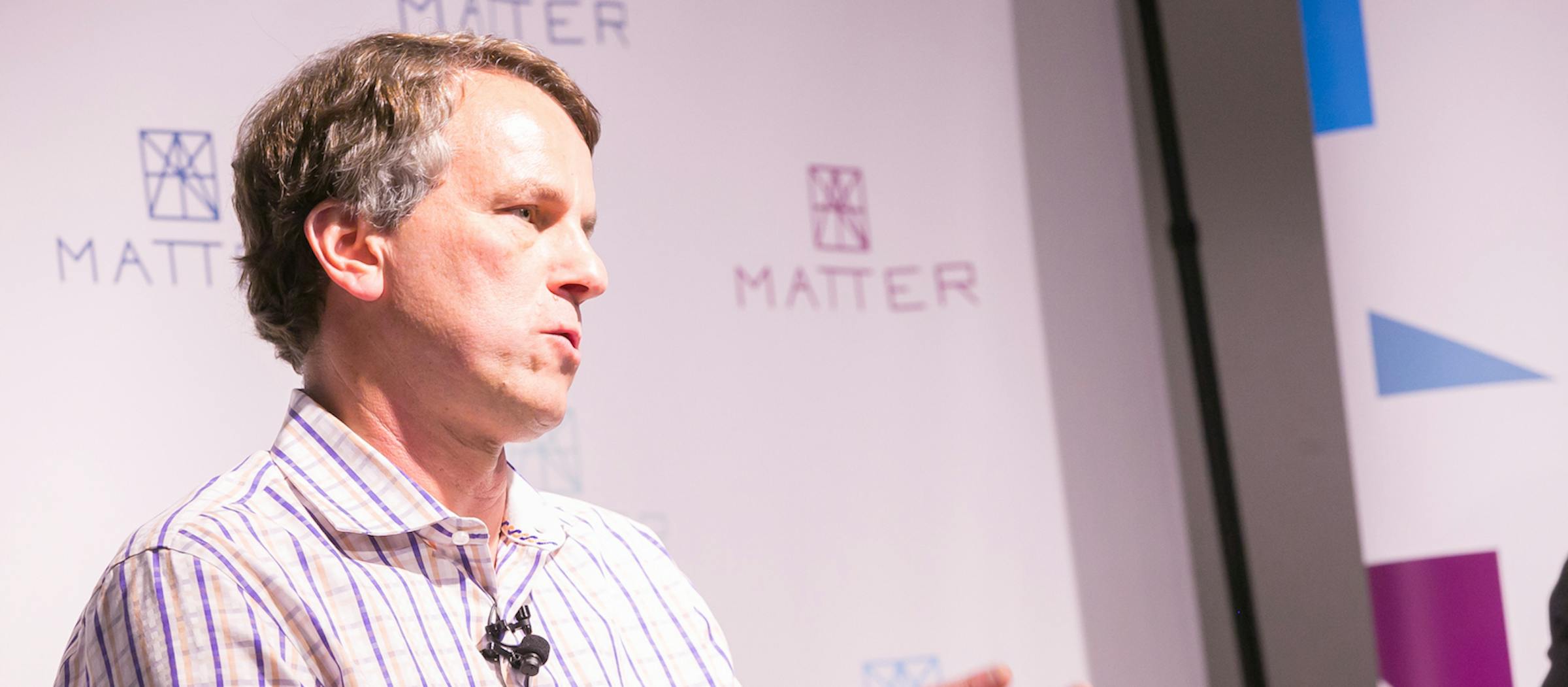The new health consumer: A conversation with Livongo’s Glen Tullman
In a system designed to treat acute conditions rather than manage chronic ones, how can we rethink the current approach to healthcare? In his new book, On Our Terms, Livongo CEO Glen Tullman argues that we need to view the people actually living with chronic disease not as patients, but rather as health consumers.
On November 19, MATTER CEO Steven Collens sat down with Glen to discuss how we, as consumers, can take charge of our own health and how the healthcare landscape must change to accommodate this shift.
Below are a few of our key takeaways.
The problem with our system
“We built hospitals for acute conditions — they’re really optimized to do that. What they aren’t good at is treating chronic conditions. And today, most healthcare costs are driven by the 135 million Americans with chronic conditions. So, if you think about it, if you’re in front of a doctor for five hours a year, that means that 99.9% of the time you’re on your own… But if you have a chronic condition, you have it all the time. Diabetes and hypertension don’t know that the hours are 8 to 5. If you need to be cared for all the time, you need a system designed for that.”
Empowering the new health consumer
“Medicine in our country is typically something that is done to you. For most people, when something happens, we say you have to go see a doctor, you have to go to a hospital… We do things to people. We medicate people. What we haven’t done is empower people [and said to them], ‘Here’s how you can be in control of this.’ And when we do that, we get much better results.
“The second thing is, the people we’re treating have changed. So they aren’t people who say, ‘Okay. I get it. I’ll come exactly when you want. I’ll interrupt my day. I’ll leave work.’ They’re starting to be health consumers, and they’re starting to say, ‘Well, why is it that this treatment is bad and I have to wait a few hours and it’s so expensive?’”
Transparency is key
“If you simply took all the healthcare and you assumed the quality was generally the same — and you made sure to optimize in each case — we could cut healthcare costs by 30-40% in all of Chicago by simply going to the most cost-effective place with the exact same quality. But we don’t have that information… As we get transparency, we’ll be able to look and say, ‘Here’s the cost, here’s the quality, and here’s where we want to go.’ Some people may still make a different choice than others, but it will be your choice on your terms.”
Behavior change is possible
“Today at Livongo, we’re delivering behavior change at scale. There are really three things that you need: What you tell people has to be actionable, it has to be personalized and it has to be timely. If you can do those three things and catch people at the right moment, then you can give them the opportunity to change.
“Through our health signal engines, we can tell what works for people. And that’s what people want — because I believe that if you tell anybody that this will make you feel better, they will do it. Because when you’re not feeling well, all you really want is to feel better. And we can deliver that.”



